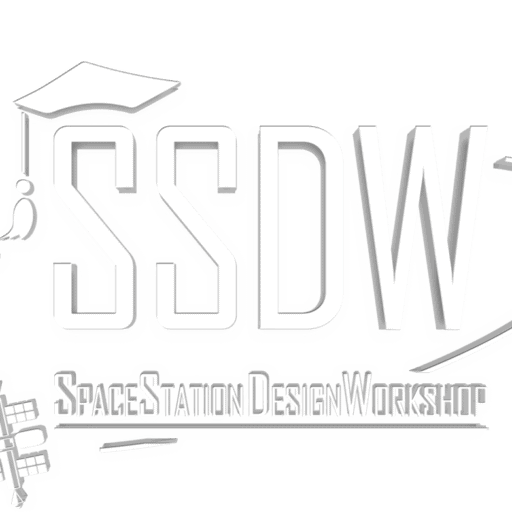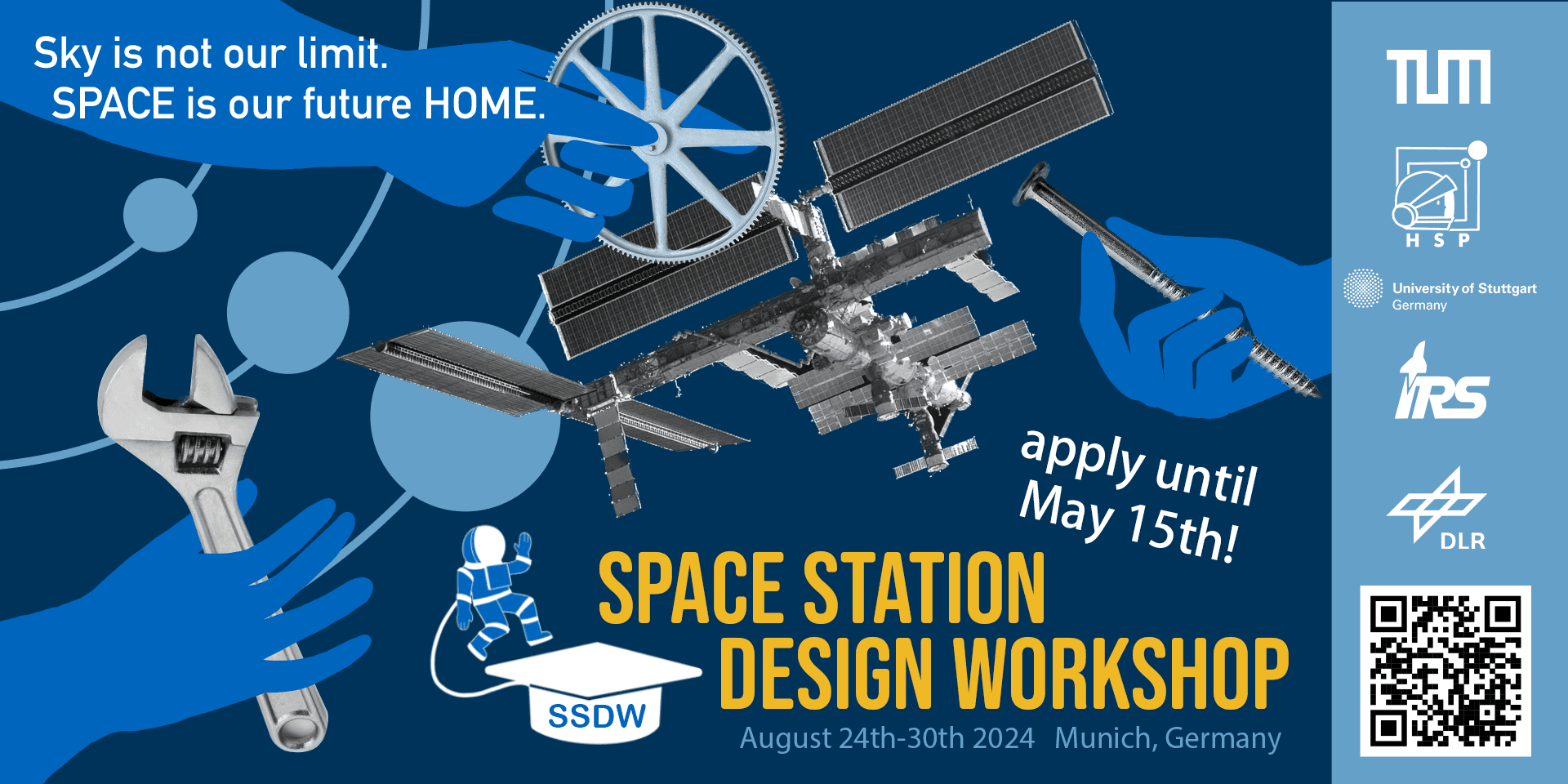Space Station Design Workshop
Achieve your design as a team.
SSDW Positions
A conceptual design study requires teamwork from several different disciplines.
The following list represents an overview of the positions you could apply for in the past.
Mission Analysis
An important part of mission analysis is the determination of the desired orbit. As several other subsystems expect information about the orbit from the mission analysts, a good general knowledge of space missions is preferable. Possible outputs for other subsystems are the visibility of celestial bodies of interest such as Earth, Moon, Sun, etc. and/or of specific ground stations on Earth, the amount of required propellant for an orbit transfer and many more.
Communications
Astronauts want to be able to communicate with mission control and relatives on Earth. In addition, science and housekeeping data should be transmitted. The communication subsystem position will be tasked to design a communication system that can offer the needed data transfer rates for the mission with state of the art technology systems. If you thought communication is referring to social networking, you might want to have a look at the Journalism position.
Systems Engineering
Do you like budgets? Do you like making trade-offs? Do you like keeping track of the progression of a project? Can you come up with quick solutions for complicated problems that affect all subsystems? Then this is the task for you!
Attitude & Orbit Control
Every spacecraft needs an attitude & orbit control system. For instance, this system assures correct payload pointing during operations and thruster alignment for propulsive maneuvers. You will need to understand how control systems works and what sensors and actuators are used for this subsystem to design a functional concept.
Project Management and Mission Operations
Are you an organizational talent and do you know how to lead a team with strict time constraints to achieve a common goal? Then this is the job for you! A general knowledge of space subsystems and space missions as well as cost and risk analysis are an advantage.
Further, it is of outmost importance to understand a mission timeline with specific operation phases. This can influence decisions for setting launch dates, production timelines as well as EVA and human operations on a space station or planetary base. Scientific experiments can also only be carried out at certain times or places within the scope of a mission. These impact the final time schedule of a project to meet mission objectives.
Editorial Team
A space project isn’t only a scientific and engineering problem. It also requires a motivated team as well as public outreach to scientific communities and day to day people. Your job will be to represent your team and their work for all audiences. You will have to understand your project in full and for this reason
it will also be your job to communicate time critical problems and work packages between your team members to ensure the project can meet its set deadline. Once you understand the space mission and its designed results of your team, you will need to make sure that the project is documented in full for all interested readers.
You will need good English reading and writing skills, artistic creativity, a knack for social media platforms as well as sound knowledge of space missions and their representation to the public and a sense for team motivation to reach the objectives of a project in full.
Electrical Power Systems
Without power nothing works – especially in space! This subsystem is vital to guarantee the safe conduction of a mission. Solar cells, fuel cells, batteries and more should be your main interest. This concept needs to allow for the survival and safe functionality of the spacecraft to reach the main mission goals.
Entry, Descent and Landing
If we want our astronauts to return safely to Earth or land on another celestial body, the spacecraft and inhabitants have to survive the landing. This is one of the most challenging and critical parts of a space mission. Your task will be to come up with a feasible concept to face these challenges.
Structure & Aerodynamics
Nothing works without structure! You will literally be tasked with designing the space stations main structures.
Robotics & EVA
Have you always dreamed of building Mars rovers? The Robotics & EVA position will need to come up with concepts to help the crew achieve their mission with the help of autonomous systems.
Thermal Control Systems
Major temperature differences within short distances / time periods are typical for the space environment. A thermal control system is needed for astronauts and electronic components to survive. You will be in charge to design an reliable and adequate system.
Human Factors
As space missions are strenuous for human bodies from physiological and psychological points of view, you will be tasked to create a safe and healthy environment for the crew, where astronauts can be happy and productive.
Radiation
As we all know space is a hostile environment. Radiation shielding is one of the big topics for long term missions outside the Earth magnetic field. Your task will be to assure adequate protection for the astronauts during all phases of their mission.
Life Support Systems
As you can’t take your home planet with you when you travel through space, you have to create your own survivable environment. The life support system has to guarantee the functionality of all subsystems involved to assure the availability of vital elements as breathable atmosphere and food to support the crew members during their mission.
Propulsion & Transport
3,2,1- and we have lift of! Exciting words for the start of every space mission. But how do you decide which launcher to take? How many launches do you need to get your equipment and astronauts safely to your desired point of interest in space? These are questions you will need to answer if you want to be responsible for this subsystem.
Astrophysics
Astrophysicists add understanding and in-depth knowledge of the universe and its secrets that engineers can, in turn, apply to mission as well as payload design. A mission is only as successful as its payload and use-case design.
Design & Visualization
Every mission needs a mission patch! But not only is the mission patch important, but also architectural design of space craft and space hub interior and exterior. You will be required to design habitats, space craft and their interior space usage in a smart way. It is also very important to make these designs very realistic and appealing. This guarantees mission funding for your team and makes for great pictures we can use on our website.
In-Situ Resource Utilization & In-Space Manufacturing
What kind of resources are available on other planetary bodies that we could explore, collect and process for use in our mission? Which systems could be manufactured in space and could enhance the mission? Answering these questions can improve mission success as well as independency from Earth.

